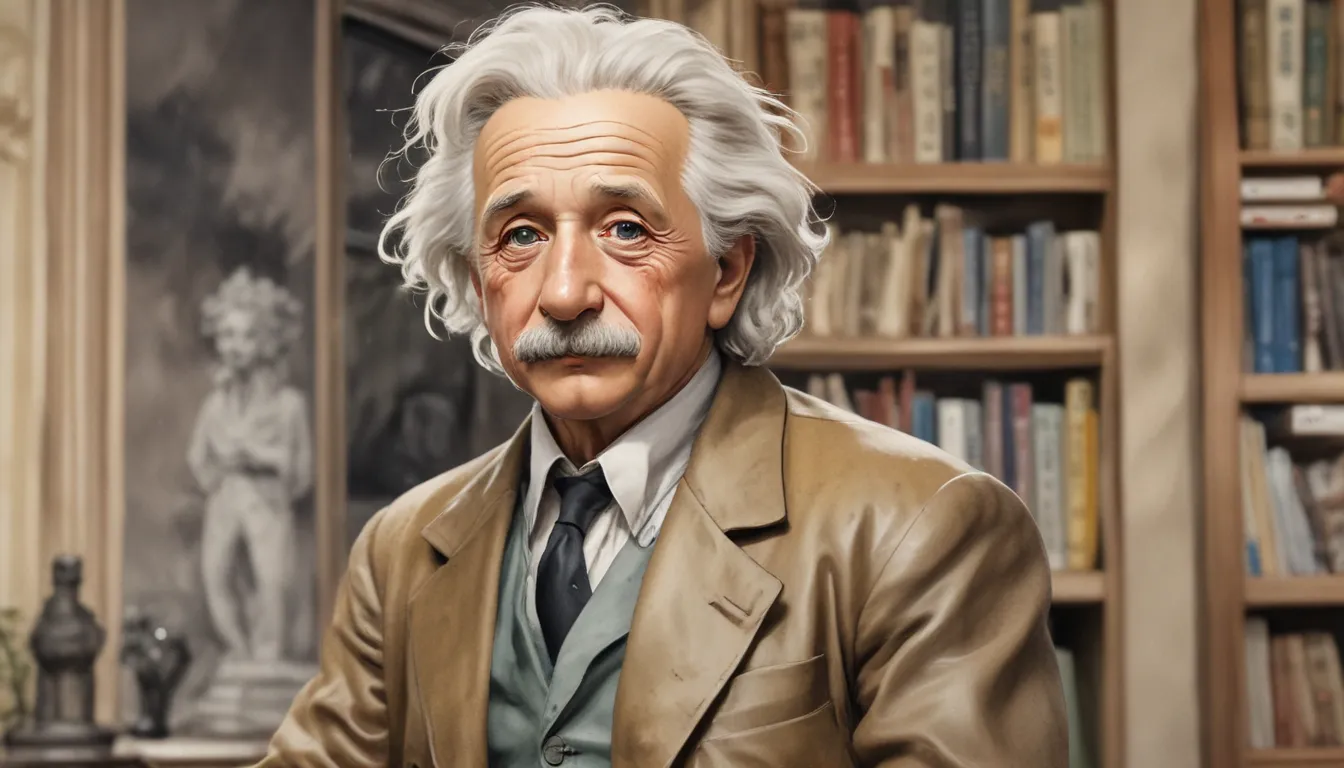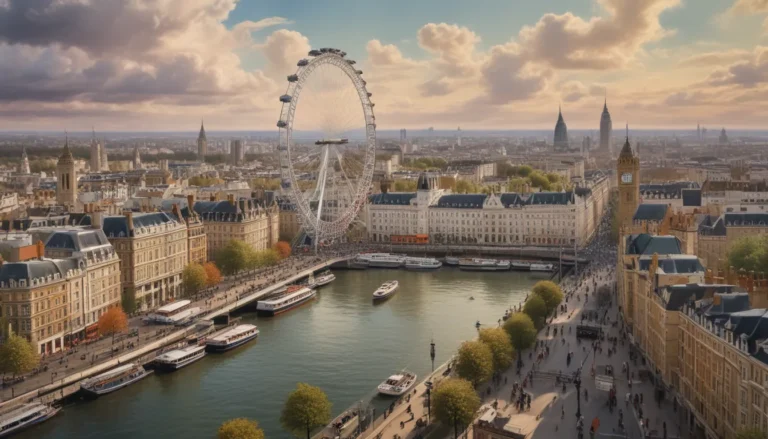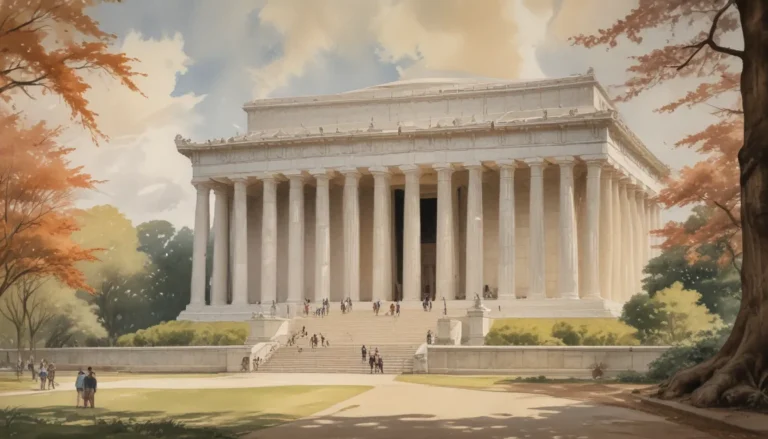The images in our articles are for illustrative purposes only and may not exactly match the content. They are intended to capture your interest and complement the text, not to replace it.
Welcome to a world where art meets science, where curiosity reigns supreme, and where the legacy of one of the greatest minds in history is immortalized in bronze. The Albert Einstein statue, an iconic landmark revered around the globe, stands as a testament to the brilliance and intellectual curiosity that defined the renowned physicist. Join us on a journey of discovery as we unveil 12 intriguing facts about this remarkable tribute to Albert Einstein, shedding light on its significance, history, and hidden details.
The Birthplace of the Statue
Nestled in the heart of Washington D.C., the Albert Einstein statue finds its home at the National Academy of Sciences on Constitution Avenue. Unveiled to the public on April 22, 1979, this timeless masterpiece stands as a beacon of inspiration for all who encounter it.
The Artistic Genius Behind the Creation
Sculpted by the talented hands of Robert Berks, an eminent American artist renowned for his lifelike representations, the Albert Einstein statue captures the essence of the physicist’s personality and intellectual brilliance with unmatched precision.
A Timeless Tribute to Scientific Innovation
Commissioned in honor of Albert Einstein’s centennial birth anniversary, the statue symbolizes the revolutionary contributions he made to the field of physics. It serves as a poignant reminder of his enduring impact on the scientific community and the world at large.
Symbolism in Sculpture: A Celebration of Genius
Seated on a granite bench adorned with reliefs and equations representing his groundbreaking scientific theories, Albert Einstein’s statue embodies the essence of his intellectual legacy. The presence of his iconic equations, including the theory of relativity, adds depth and meaning to the sculpture.
The Significance of Bronze: A Material of Strength and Reverence
Crafted from durable bronze, the statue exudes a sense of grandeur and permanence that befits the legacy of Albert Einstein. This noble material not only withstands the test of time but also commands respect and admiration for the brilliance it represents.
Capturing the Essence: A Sculptural Masterpiece
With meticulous attention to detail, Robert Berks captured the intellectual intensity and deep contemplation that defined Albert Einstein. The lifelike features and profound gaze of the physicist immortalize his spirit in a truly captivating manner.
A Global Tribute to a Scientific Icon
Replicas of the Albert Einstein statue can be found in cities worldwide, including Jerusalem, Israel, and Buenos Aires, Argentina. This international homage underscores the universal recognition and appreciation of Einstein’s profound contributions to humanity.
A Gathering Place for Intellectual Discourse
The statue has become a popular meeting spot for academics, physicists, and admirers of Albert Einstein. Surrounded by an aura of inspiration, it fosters reflection and intellectual discussions, creating a sacred space for the exchange of ideas and knowledge.
Educating Through Art: Unveiling the Genius of Einstein
As an educational tool, the Albert Einstein statue attracts visitors eager to explore the life and work of the renowned physicist. It offers a gateway to the theories and discoveries that revolutionized our understanding of the universe, inspiring curiosity and intellectual growth.
Tranquility Amidst Reflection: The Serene Reflection Pool
Accompanied by a tranquil reflection pool, the statue’s visual appeal is further enhanced, creating an atmosphere of serenity and contemplation. The pool symbolizes the depth of Einstein’s intellect and the profound impact of his scientific endeavors on our worldview.
Engaging with Genius: A Personal Connection with Einstein
Visitors have the unique opportunity to sit beside Albert Einstein on the bench, forging a personal connection with the great scientist. This immersive interaction allows individuals to contemplate the mysteries of the universe and experience a sense of closeness with Einstein’s profound legacy.
Inspiring Future Generations: A Symbol of Curiosity and Wonder
The Albert Einstein statue stands as a beacon of inspiration, urging future generations to pursue scientific inquiry and embrace the spirit of curiosity. It encapsulates the essence of Einstein’s lifelong quest for knowledge, encouraging all who encounter it to reach beyond the confines of conventional wisdom.
In conclusion, the Albert Einstein statue is more than a mere tribute; it is a gateway to the world of scientific inquiry, a testament to the enduring legacy of a visionary mind. Its rich symbolism, intricate design, and profound significance continue to captivate and inspire visitors from all walks of life. So, the next time you find yourself in Washington, D.C., be sure to pay homage to this iconic statue and unravel its hidden secrets for yourself.
FAQs: Unveiling the Mysteries of the Albert Einstein Statue
-
Where is the Albert Einstein statue located?
The Albert Einstein statue is located at the National Academy of Sciences in Washington, D.C., United States. -
Who created the Albert Einstein statue?
The Albert Einstein statue was created by sculptor Robert Berks. -
When was the Albert Einstein statue unveiled?
The Albert Einstein statue was unveiled on April 22, 1979. -
What does the inscription on the statue mean?
The inscription on the Albert Einstein statue reads, “E=mc²,” symbolizing the connection between energy and mass. -
How tall is the Albert Einstein statue?
The statue stands at approximately 12 feet in height. -
Can visitors touch or climb on the statue?
No, visitors are not allowed to touch or climb on the Albert Einstein statue, as it is a protected historical monument. -
Is there an entrance fee to see the statue?
No, there is no entrance fee to see the Albert Einstein statue. It is open to the public. -
Are there other landmarks near the statue?
Yes, there are several other landmarks near the Albert Einstein statue, including the Lincoln Memorial and the Smithsonian National Air and Space Museum. -
Can visitors take photographs of the statue?
Yes, visitors are permitted to take photographs of the Albert Einstein statue for personal use. -
Is parking available near the statue?
Limited street parking is available near the National Academy of Sciences where the Albert Einstein statue is located. Public transportation or ride-sharing services are recommended due to limited parking availability.
In your quest for knowledge and discovery, may the Albert Einstein statue be a guiding light, illuminating the path to scientific wonder and intellectual enlightenment. Embark on a journey of exploration, and let the genius of Einstein’s legacy inspire you to reach for the stars.






